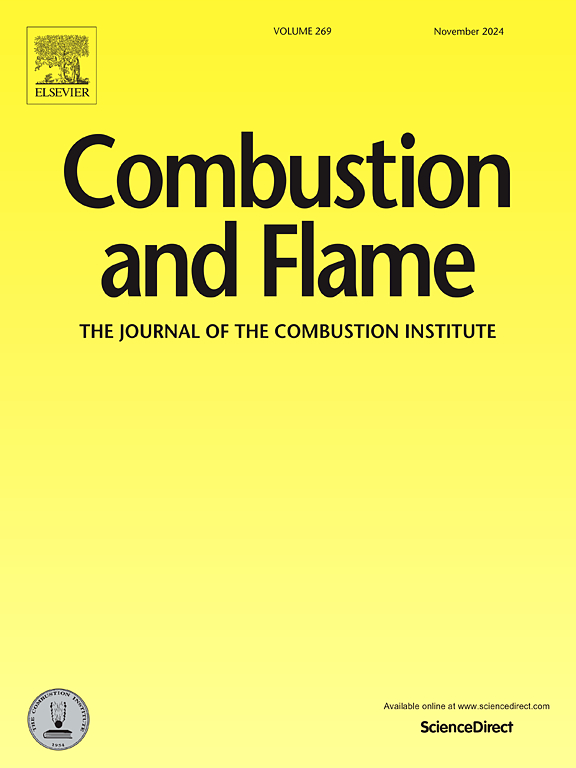Understanding key interactions between NOx and C2-C5 alkanes and alkenes: The ab initio kinetics and influences of H-atom abstractions by NO2
IF 5.8
2区 工程技术
Q2 ENERGY & FUELS
引用次数: 0
Abstract
This study aims to reveal the important role and the respective rate rules of H-atom abstractions by NO2 for better understanding NOX/hydrocarbon interactions. To this end, H-atom abstractions from C2-C5 alkanes and alkenes (15 species) by NO2, leading to the formation of three HNO2 isomers (trans-HONO, HNO2, and cis-HONO) and their respective products (45 reactions), are first characterized through quantum chemistry computation, where electronic structures, single point energies, C-H bond dissociation energies and 1-D hindered rotor potentials are determined at DLPNO-CCSD(T)/cc-pVDZ//M06–2X/6−311++g(d,p). The rate coefficients for all studied reactions, over a temperature range from 298.15 to 2000 K, are computed using transition state theory with the Master Equation System Solver program. Comprehensive analysis of branching ratios elucidates the diversity and similarities between different species, HNO2 isomers, and abstraction sites, from which accurate rate rules are determined. With the rate rules, the rate coefficients at various reaction sites on heavier hydrocarbons (e.g., > C5) can be reliably estimated by analogy. Incorporating the updated rate parameters into a detailed chemical kinetic model reveals the significant influences of this type of reaction on model prediction results, where the simulated ignition delay times are either prolonged or reduced, depending on the original rate parameters presented in the selected model. Sensitivity and flux analysis further highlight the critical role of this type of reaction in affecting system reactivity and reaction pathways, emphasizing the need for adequately representing these kinetics in existing chemistry models. This can now be sufficiently achieved for alkanes and alkenes based on the results from this study.
求助全文
约1分钟内获得全文
求助全文
来源期刊

Combustion and Flame
工程技术-工程:化工
CiteScore
9.50
自引率
20.50%
发文量
631
审稿时长
3.8 months
期刊介绍:
The mission of the journal is to publish high quality work from experimental, theoretical, and computational investigations on the fundamentals of combustion phenomena and closely allied matters. While submissions in all pertinent areas are welcomed, past and recent focus of the journal has been on:
Development and validation of reaction kinetics, reduction of reaction mechanisms and modeling of combustion systems, including:
Conventional, alternative and surrogate fuels;
Pollutants;
Particulate and aerosol formation and abatement;
Heterogeneous processes.
Experimental, theoretical, and computational studies of laminar and turbulent combustion phenomena, including:
Premixed and non-premixed flames;
Ignition and extinction phenomena;
Flame propagation;
Flame structure;
Instabilities and swirl;
Flame spread;
Multi-phase reactants.
Advances in diagnostic and computational methods in combustion, including:
Measurement and simulation of scalar and vector properties;
Novel techniques;
State-of-the art applications.
Fundamental investigations of combustion technologies and systems, including:
Internal combustion engines;
Gas turbines;
Small- and large-scale stationary combustion and power generation;
Catalytic combustion;
Combustion synthesis;
Combustion under extreme conditions;
New concepts.
 求助内容:
求助内容: 应助结果提醒方式:
应助结果提醒方式:


